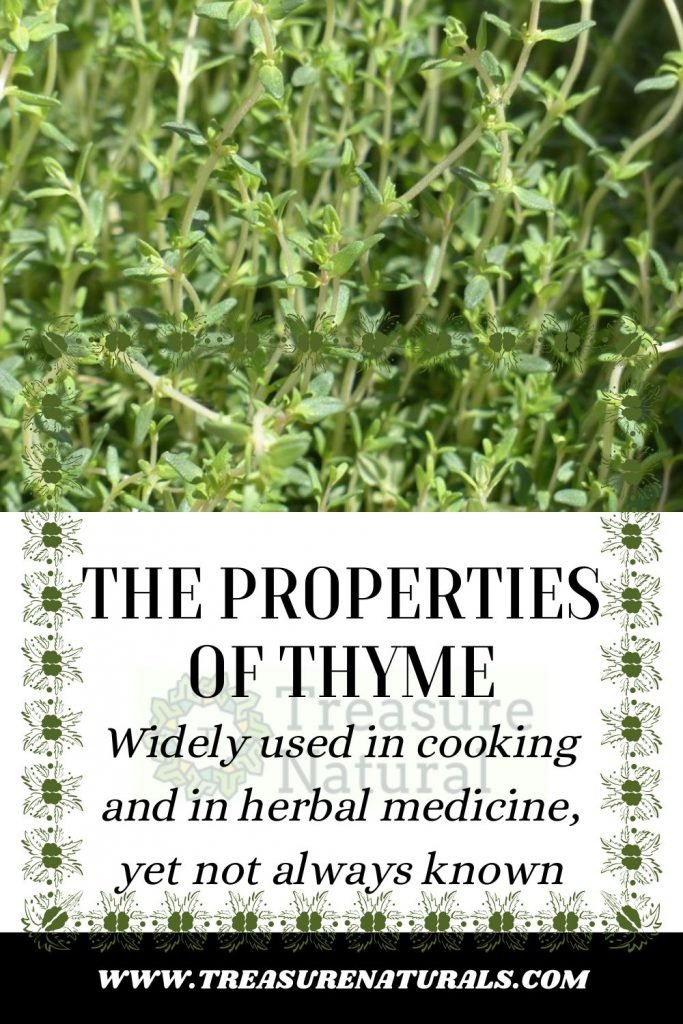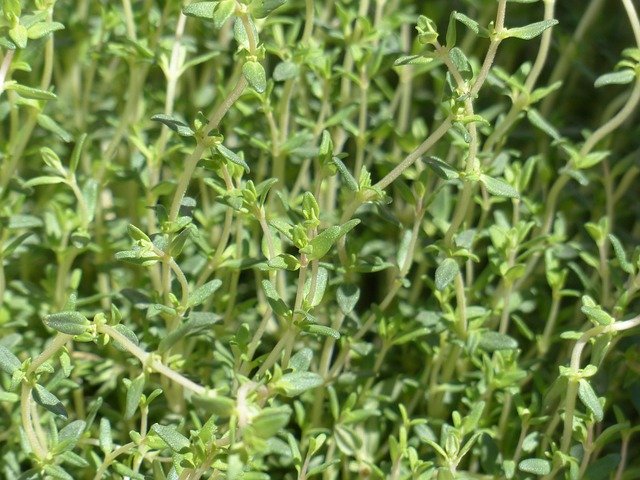
Let’s find out about thyme, its properties and uses. It is a typically Mediterranean plant that arises spontaneously, but is also cultivated because it is widely used in cooking and also in phytotherapy.
Thyme is a perennial aromatic plant that looks like a shrub with a woody stem, whose height can vary from 10 to 30 centimeters. Thyme has branches rich in green-gray leaves, blooms from spring to summer and its flowers are of a color that can vary from pinkish-white to lilac.
There are two most commonly known varieties of thyme:
- Thymus vulgaris which has a more intense aroma
- Thymus serphillo which differs because the plant is thinner and has a more delicate and less intense aroma and is preferred in cooking over common thyme.
There is also Thymus citriodorus which is characterized by a slight hint of lemon, its main use is in the kitchen or as an ornament, while it is not used in herbal medicine.
Thyme: properties and benefits
Both fresh and dried leaves and flowers are used for thyme.
The flowers and leaves contain an active ingredient called thymol on which the aromatizing, digestive, laxative, antiseptic and anti- inflammatory properties depend, the latter in particular in relation to lung and bronchial diseases.
Thyme: recipes and uses in the kitchen
In the kitchen, this aromatic plant can be accompanied by different types of dishes, soups, meats, fillings, sauces and sauces, omelettes and fish. When it comes to this spice in combination with various foods, it should also be remembered that thyme helps its conservation and counteracts the formation of mold.
Baked potatoes with thyme
A great recipe to try is baked potatoes with thyme.
Here is the preparation in its various steps of this very simple recipe:
- you need to peel about 1.5 kg of potatoes and then cook them in boiling water for a few minutes with the peel
- in the meantime, cut a shallot, chop it, put the potatoes into pieces (if small cut in half) in a pan and sprinkle with the shallot and extra-virgin olive oil
- pass a handful of thyme, salt and pepper according to taste and put it in the oven at 200 ° for about 40 minutes.
Very easy to prepare, tasty and also healthy as a recipe …
How to store thyme?
Although it is recommended to use fresh thyme within a week, if you happen to buy too much, know that the leaves of this plant can be stored for a long time. To keep them for a long time, however, it is necessary to strictly follow the drying process and keep them in a sterile jar.
This process is divided into four phases:
- Washing: first we will wash the twigs with the leaves attached under a jet of running water. Better not to detach the leaves from the twig before this stage, otherwise it will be difficult to dry them later.
- Dry the leaves: we come to the second stage. We will equip ourselves with a sheet of kitchen paper, placing the sprigs of thyme and we will make sure that all the water is dried, leaving everything in an airy place.
- Removal of the leaves: once the twigs are completely dry, we detach the leaves from the twigs and leave them for a few days to dry, turning them from time to time. They will take on a light brown hue.
- Finally, once dried, we will place the thyme leaves inside a hermetically sealed glass container, suitably sterilized with previously boiling water.
They will not retain all the properties of fresh thyme, but they will be an extra resource for your pantry, lending themselves well to flavoring soups, meats and other dishes.
Thyme essential oil
Naturally, an essential oil with an excellent aroma and appreciated beneficial properties is obtained from the leaves of this plant. Thyme essential oil is recognized for astringent and antibacterial properties which make it a perfect ally against bacterial and fungal infections, dermatitis, disinfect insect bites and also to treat oily hair.
Legends and curiosities about thyme

The history of this spontaneous plant is full of episodes and legends that make us understand how much it was appreciated by various civilizations. The ancient Egyptians knew the antiseptic properties of thyme and its useful action to prevent tissue putrefaction: it is an established fact that they used it in compounds that were used to mummify the pharaohs and it is no coincidence that thyme continues to be used today from embalmers and taxidermists.
There are several legends traditionally linked to this perennial plant, since the times of Ancient Greece: at the time it was said that the thyme was generated by the tears of Ariadne, desperate for having been abandoned by her beloved Theseus. Ariadne’s weeping with her perfume ended up attracting Dionisio to her, who then took her in marriage.
The aroma of thyme, considered by the ancient Greeks to bring vitality, ardor and courage, found application in preparation for battle: the bodies of the warriors were in fact washed and toned with water and thyme before battles. Thyme was also used extensively in various sacred rites.
Even for the ancient Romans, thyme was an important plant, used both in the preservation of food, to purify the air of closed environments or even flavor cheeses.
Even in the medieval centuries, thyme was seen as a bringer of luck in battle and often a bee placed on the flowers of this plant was embroidered on the insignia of their knights.






